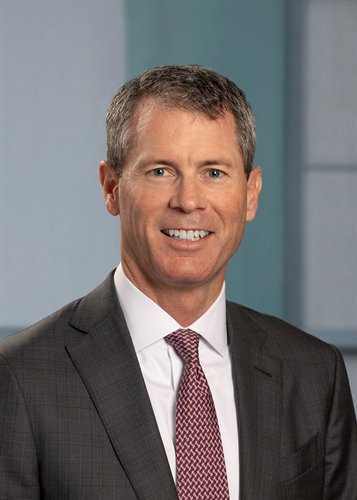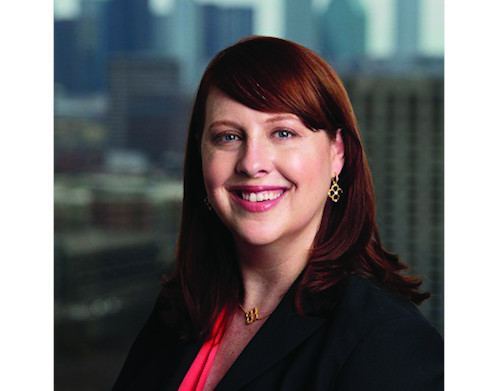
Source: Arsenie Krasnevsky/Shutterstock.com
[Editor's note: A version of this story appears in the 2020 edition of Oil and Gas Investor’s Capital Formation. See more stories like this here.]
Never mind the volatility seen in the oil markets since March. The commercial banking sector experienced its worst year in 30 years in 2019, according to Mike Lister, J.P. Morgan managing director and group head for energy and power. Banks suffered some $750 million to $1 billion in reserve-based loan (RBL) charge-offs, he estimated, which are supposed to be the most secure energy loans.
“Let that wash over you for a minute. Not 2016, not 2015—that was a relative movement,” Lister said. 2019 was “very material, and I think that trend is going to continue at least into the first half of 2020 and likely the full year given what we’re dealing with in the markets now.”
Lister spoke on a panel of RBL bankers at Oil and Gas Investor’s Energy Capital Conference in Dallas on March 2. Note that his comments above and all those following were made a week in advance of the oil price collapse on March 9. The price of oil on that date was $45 WTI and had already fallen from a high of $63 earlier in the year.

Even before the Saudi-Russia market share tussle, Lister saw 2020 as challenged. “When I look at trading values across the sector and at the distress levels, that would indicate more pain to come. Winter is coming.”
Looking back, Lister said what banks got wrong was that they didn’t differentiate enough. “Most everybody got a standard four-times leverage covenant at a fairly generic RBL term sheet. And the lender community probably got it wrong for a number of years in a bull market.”
With the pain seen in the banking markets, are RBLs therefore at risk?
“I think people have a pretty sober assessment of where we are,” said Lister. “Frankly, there haven’t been that many new deals. There’ve been four or five new deals over the past three or four months of size.”
But there are banks that are lending, he said. “It’s a difficult market, but for someone wanting to raise new RBL capital, it is available.”
Lister affirmed that, despite some banks abandoning oil and gas books, “We remain open for business and committed to the sector.”
The first question companies have to answer is the quantum of money they want to raise, he said. Many banks have hit the pause button or just have left. “But there’s still a core group of banks that lend and aspire to lend. It’s just that the parameters are tighter.”
For example, in a good market, if a bank had a checklist of six things it needed and it was able to check three or four, it probably would have approved the deal. Now, “if they don’t have all six boxes checked, they’re not going to do the deal,” Lister said. “So I think it’s just making sure of your structure and that you price things in a way that can clear the market.”
Growing portfolios prudently
Steve Kennedy, executive vice president and head of energy banking for Amegy Bank, emphasized that Amegy is open for business. “We had double-digit loan growth in energy last year, so we definitely are doing deals,” he said, but he clarified that they too “want all the boxes checked. In this market, it shouldn’t be a surprise that the pricing and the terms all have to be right. It would be very difficult for us to stretch on deals at this point and probably not terribly prudent, especially on new ones.”
Valuing collateral has become more difficult over the past year for banks, he said. Recalling an encounter at NAPE in February, Kennedy said that person told him, “I feel like I’m in a mall at a 50% off sale.” The comment motivated Kennedy to explore collateral values.
His findings: Whereas PV-9 was a proxy for collateral value historically, today that is more in the range of 20% to 30%. If enterprise value-to- EBITDA was in the six to eight range, now it’s three and a half to four and a half. “Current valuations are somewhere in the 60% range relative to where we were in the good old days,” he deduced.
So if a bank were to loan at 60% of PV-9, a typical scenario, “We might be loaning market value in some cases, and we can’t do that. We have to keep an equity cushion,” Kennedy said.
Rather, there is no formula for lending now. “It depends,” he said. Every case is unique.
“The PV we’ll be using when we determine a borrowing base is still undetermined. I can guarantee you it’s not going to be a straight up 9%; it will probably be in the 15% to 20% range depending on the risks. I think banks want to see debt-to- EBITDA on a new deal somewhere in the two and a half to lower range. A bank making a new loan is not going to want to see debt-to-EBITDA levels immediately above three,” Kennedy said.

“The risks are different with each deal, and we’re going to have to start differentiating that risk a little better in the future.”
Going forward, J.P. Morgan’s Lister said banks are likely to differentiate more on structure, pricing, scale, leverage, liquidity and market value of their assets. “If we’re going into a new loan or look at an existing loan to make modifications, I want our A&D team to weigh in and give me a real assessment of market value,” he said. “We didn’t used to do that as much, but that’s a relevant datapoint to us right now.”
And equity alignment “is critical” to a lending situation as well, he revealed. “Whether it’s a private-equity firm or not, we want to know we’re aligned with the right amount of equity on a new deal.”
On existing RBLs, though, “We want to work with our borrowers,” Kennedy said. “We’re not looking to pull the rug out from under anyone and completely change the way that we have worked their RBL if they have an RBL that’s fully outstanding. We’re going to look at that differently than we would one that we’re contemplating making today as a new loan.
“We know that values are going to come back eventually. Our job is, until that happens, to make sure everybody maintains some equity component of capital in their structure. As long as there is some equity capital at current market values, we would like to give people as much time as they need for that market to come back, which will eventually happen.”
East West Bank’s portfolio has only a couple of clients in workout situations, said Christina Kitchens, group managing director of specialized industries finance, but their focus is being aggressively proactive with operators not being as attentive to their operations as they should be or managing expenses prudently. “For us, it’s focusing on firms’ maintenance of liquidity more than anything else.” But generally, “I’m working with companies that are in good shape,” she said.
Another directive is to diversify its portfolio. “If we have holdings that are more than $25 million per name, we’re working with other institutions to get closer to $25 million across the portfolio,” Kitchens said. “We didn’t have tons of transactions that we hold more than $25 million in, but it’s something that we’re continuing to do to diversify the portfolio and still create room to do originations.”
Path to syndication
If commercial banks are open for business, can a syndicate really be easily arranged?
“I think everybody in the room knows there’s nothing easy right now,” said Lister. “Absolutely, the market is open, and we’ve syndicated a number of deals over $500 million, one multiple billions of dollars recently. So the market is there.
“It’s about, is it a new deal? Do they have an existing bank group that knows them and follows them? It’s also about pricing, structure, hedging. It’s about meeting the market where it is and not trying to jam something in that’s just not going to fit right now.”
And the hit rates are going to be lower, he noted. In a bull market, the hit rate for buyers to join the syndication can be as high as 85% or 90%. Now, the hit rates are 50% to 60%, sometimes lower.
“So it’s more work for the arranger; it is more work for the client. You have to overinvite a number of banks to make sure.” And you’re not done until you’re done, Lister said. “If you’ve got a three-week syndication process and XYZ bank is telling you they’re good, you’re not good until you close, because sometimes that package has to go to faraway places and then they get an email that says ‘no mas,’ and you’re out.”
Kennedy concurred that it is tougher to put together a syndication today for an upstream deal. Previously, some 30 core banks published price decks for making RBLs. Today, the group that will make a new RBL is down to about a dozen or so, he said. Five or six other banks that haven’t abandoned their portfolios altogether might actually get back into the market for new loans once conditions improve.
“So it is a bit of a challenge, especially for the deals that are $2 billion, $3 billion. You just run out of banks that can fill that ticket,” Kennedy said.
“I would essentially beg everybody to give yourselves more time” going into the marketplace for financing, Kitchens said. “The banks really need more time to put these syndications together. Our processes are just more elongated than they’ve been in a while.”
Basin matters, too, in the likelihood of getting a borrowing base through the traps, Lister noted. A dry-gas asset in the Barnett Shale or even in Appalachia, in some cases, is going to be more difficult. An oil deal in the Permian Basin— assuming it’s good rock—“That’s going to go a lot better,” he said.
Lenders have predispositions, Lister confessed; they know where they’ve lost money before, and those losses tend to be clustered in certain basins and regions. “And while a given bank may love the Permian and they’ll do that all day long, they might not touch another area. Part of your agent bank’s job is to understand that and not put you in harm’s way.”
Hedging to a higher borrowing base
Hedging is very important to East West, especially on originations. “We are a bank that required hedging on all of our RBL books,” Kitchens said, “and that will remain an important part of what we do in looking at originations.”
She acknowledged that entering long-term contracts during periods of price weakness can seem difficult, but East West aims to achieve close to 50% of volumes hedged with its clients for 18 to 24 months.

“We do have clients for this redetermination that are asking for some relief on putting in an additional six months rolling hedge require is incredibly important because you can’t plan for the coronavirus,” she said.
“There are certain things that happen, unfortunately, that are outside of all of our control, so we have to have some insurance to protect operations, that reliance on cash flow—especially if you have debt outstanding—to ensure that you live to see another day. So that’s really why hedging is so valuable.”
“We like it,” Kennedy said, but he agreed that it’s hard to pick a good time to hedge, “So I think it’s best just to have a rolling requirement of two years as the preferred situation.”
But if a company absolutely does not want to hedge, given that they have enough equity capital and low leverage level, “Then that could be their decision to take that risk,” Kennedy said. However, should leverage come up and it becomes more of a bank risk, “Then we certainly want to see hedging take place.”
Lister took the concept a step further and suggested that lenders should do a better job of hedging every piece of the hydrocarbon cash flow stream.
“I think it’s great to hedge the big indices, but if you’re not hedging basis risk, if you’re not hedging NGL, that’s where a lot of banks got hurt. Candidly, when you get volatility, and you didn’t fully hedge everything you thought you did, that’s an issue,” he said.
For companies that don’t want to hedge, the give-and-take might be a lower borrowing base, Lister said. “Hedging is difficult as it is at some of these prices, but we can’t be in a position of making one-way bets where, if you don’t hedge and things step down 25%, then the company goes bankrupt. And if it goes up 25%, then the company does fabulously, but we get an interest rate and a fee. We don’t have the upside, and so we have to calibrate that and have an equilibrium where we win and lose together.”
This exact scenario took place just days following the Energy Capital Conference, illustrating the downside risk and wisdom of the requirement. And maybe a dose of premonition.
Alternately, J.P. Morgan’s Lister said hedging “allows us to stretch” on the total borrowing base number.
Not so fast, PDP
One trend that banks are scrutinizing, said Kitchens, is when companies ramp up the drilling rate to convert proved developed producing (PDP) reserves quickly into borrowing base reserves. “I would say that trend very much has fallen off favor.”
Some of the transactions that were troubled over the past year were in part because of that rapid pace of conversion of PDP. Going forward, that production may not be included in the PDP category for some time, or it may be included at a pretty heavy risk factor.
“I bring that up because it’s important for those going through redetermination season not to want to rely so heavily on, ‘I'm running a drilling rig; I’m adding new production; this should solve for price weaknesses or for other things.’ It won’t necessarily solve to offset price weaknesses and those other things on unseasoned production,” she said.
In times of dropping prices, each of the bankers said it was a common goal to work with clients to provide liquidity, but they acknowledged they could only stretch so far. History and performance are key factors in determining adjustments in borrowing bases, as are valuations and where assets are trading.
“Are you going to lend against PUDs [proven undeveloped reserves],” questioned Lister. “If there’s literally zero value ascribed to PUDs in the market, it’s kind of hard to lend against it.”
J.P. Morgan is trying to be nimble and “lean in” to provide as much liquidity and capital as possible, but “Sometimes things get difficult and restructuring happens. The last thing we want to do is create a liquidity crisis by dropping the borrowing base dramatically, but we can’t ignore values either. So it’s a little bit of give and take and every situation is unique,” Lister said.
“But the goal is to get people to the other side, because we want to bank these teams for a long time. And, you know, we all know this is a pretty tough one.”
And that was before it got worse.
Recommended Reading
US Drillers Add Oil, Gas Rigs for Second Week in a Row
2024-01-26 - The oil and gas rig count, an early indicator of future output, rose by one to 621 in the week to Jan. 26.
Second Light Oil Discovery in Mopane-1X Well
2024-01-26 - Galp Energia's Avo-2 target in the Mopane-1X well offshore Namibia delivers second significant column of light oil.
CNOOC Sets Increased 2024-2026 Production Targets
2024-01-25 - CNOOC Ltd. plans on $17.5B capex in 2024, with 63% of that dedicated to project development.
E&P Highlights: Jan. 29, 2024
2024-01-29 - Here’s a roundup of the latest E&P headlines, including activity at the Ichthys Field offshore Australia and new contract awards.
Seadrill Awarded $97.5 Million in Drillship Contracts
2024-01-30 - Seadrill will also resume management services for its West Auriga drillship earlier than anticipated.




